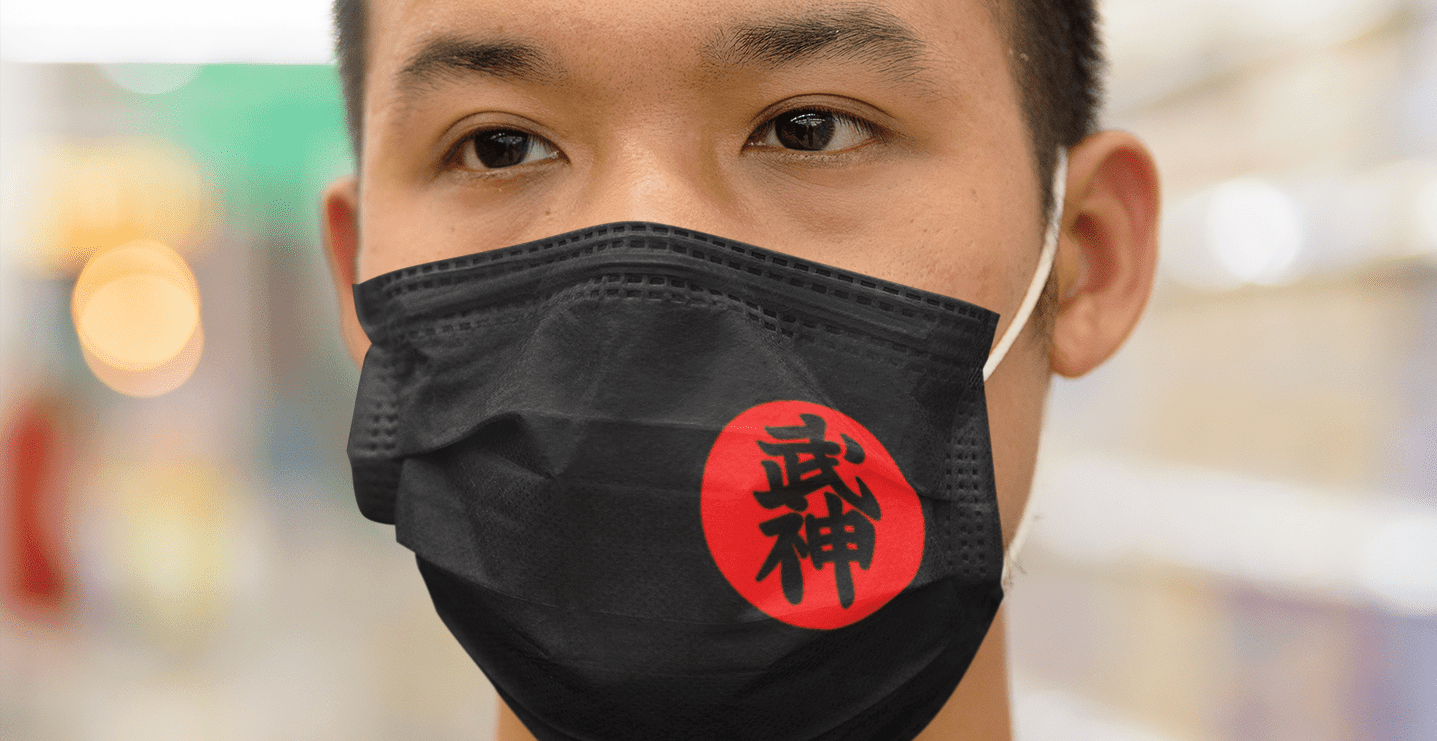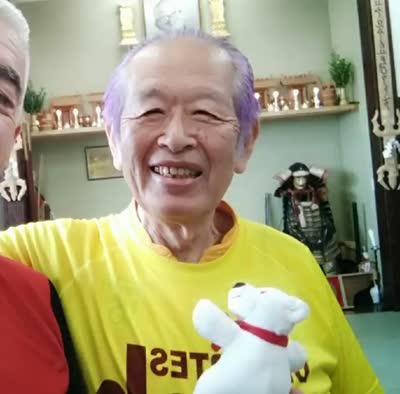From Shiro Kuma by kumafr
 I’m happy I have studied Ninpō Taijutsu for the last 36 years. Bujinkan trained me to be ready for the unexpected. Like the Black Swan (1), unexpected events occur. The pandemic blew out the world economy. Our way of life is badly hit, and many training halls had to close. Some of them will never reopen.
I’m happy I have studied Ninpō Taijutsu for the last 36 years. Bujinkan trained me to be ready for the unexpected. Like the Black Swan (1), unexpected events occur. The pandemic blew out the world economy. Our way of life is badly hit, and many training halls had to close. Some of them will never reopen.
At the end of June in France, the government allowed us to go back to the Dōjō. With a mask and with little contact. Thanks to the Bujinkan wide range of possibilities, we’ve been teaching Bō jutsu (outdoor) for a few weeks. If it feels good to be back on the mats, but I’m concerned about the other martial arts.
If the Bujinkan is lucky, to have plenty of weapons to train. Gendai Budō (2) such as Jūdō, Karatedō, Aikidō, BJJ need physical contact. When they lifted the ban partly at the end of July, we went to train long weapons, outdoor. My Gendai friends couldn’t resume training, as physical contacts were not authorized.
You know how hard it is to have regular students in the Dōjō and to keep them. The pandemic might spell out the end of martial arts the way we know them. A large part of existing training halls will not reopen after the ban. And those reopening might also die by lack of adaptation.
If you read the “Spirit of Movement” (3), you know that, before entering the Bujinkan, I trained Jūdō for a long time. I let down Jūdō, and chose Bujinkan. I couldn’t learn two martial arts in parallel and manage my daily job. But some do that correctly like my Spanish brother, Juan Manuel Serrano. Not only is he a reputed Bujinkan Dai Shihan, but he also earns a 6th dan in Jūdō! And to achieve this rank in Jūdō is not easy. Even today, he continues to teach both arts at the same time. That’s impressive. During the pandemic, he was able to continue by teaching long weapons. But his fellow Jūdō teachers had to stay at home!
The Bujinkan teaches several qualities such as resilience, perseverance, and excellence. Three aspects impersonated by my friend Juanma. Budō training teaches to adapt and to accept change when it comes. Without accepting change, we cannot adjust our behaviours. Charles Darwin wrote that “It is not the strongest of the species that survives. It is not the most intelligent that survives. It is the one that is the most adaptable to change.” This could be a sentence said by Hatsumi Sensei during class.
In Japanese, “to adapt” is “atehameru”.
The essence of Bujinkan, Budō, and Life is adaptation.
Weapons, tactics, and mentalities evolved through centuries. Martial arts have always adapted to change. It would never have survived to the 21st century if the warriors didn’t welcome change. That is what Bujinkan is and what Bujinkan is teaching.
Today’s change is the “mask”. You don’t need to like it. Wear the mask, and get a new chance to adapt your behaviour to this unexpected situation. Just Do It!
Atehameru to atehameru (apply and adapt).
We are Togakure ninja. Therefore we have been wearing masks since 1161. Stop complaining and go back to training. The freedom you seek resides in your training.
1 https://en.wikipedia.org/wiki/The_Black_Swan:_The_Impact_of_the_Highly_Improbable2 https://en.wikipedia.org/wiki/Gendai_bud%C5%8D
3 “The Spirit of movement” exists in e-book or paperback depending on the language, if you are interested check it: //ws-eu.amazon-adsystem.com/widgets/q?ServiceVersion=20070822&OneJS=1&Operation=GetAdHtml&MarketPlace=FR&source=ac&ref=qf_sp_asin_til&ad_type=product_link&tracking_id=koi20-21&marketplace=amazon®ion=FR&placement=2361570645&asins=2361570645&linkId=14325edccfb9ed7d876300455e54cd45&show_border=false&link_opens_in_new_window=false&price_color=333333&title_color=0066c0&bg_color=ffffff“>FRA //ws-eu.amazon-adsystem.com/widgets/q?ServiceVersion=20070822&OneJS=1&Operation=GetAdHtml&MarketPlace=FR&source=ac&ref=tf_til&ad_type=product_link&tracking_id=koi20-21&marketplace=amazon®ion=FR&placement=B00PUKZY9C&asins=B00PUKZY9C&linkId=085802a038abb8f70224718c77fd0fd2&show_border=false&link_opens_in_new_window=false&price_color=333333&title_color=0066C0&bg_color=FFFFFF“>ENG //ws-eu.amazon-adsystem.com/widgets/q?ServiceVersion=20070822&OneJS=1&Operation=GetAdHtml&MarketPlace=FR&source=ac&ref=qf_sp_asin_til&ad_type=product_link&tracking_id=koi20-21&marketplace=amazon®ion=FR&placement=B00VA0TVW2&asins=B00VA0TVW2&linkId=27aff3f2a8f064fd6faac02deb06371a&show_border=false&link_opens_in_new_window=false&price_color=333333&title_color=0066c0&bg_color=ffffff“>SPA
4 当てはめる, atehameru: to apply, to adapt

Read More
 Are we Back to “Panem et Circenses,” the times of “Bread and Circuses” as exposed by Juvenal around two centuries before our time? It looks like it! (1)
Are we Back to “Panem et Circenses,” the times of “Bread and Circuses” as exposed by Juvenal around two centuries before our time? It looks like it! (1)


